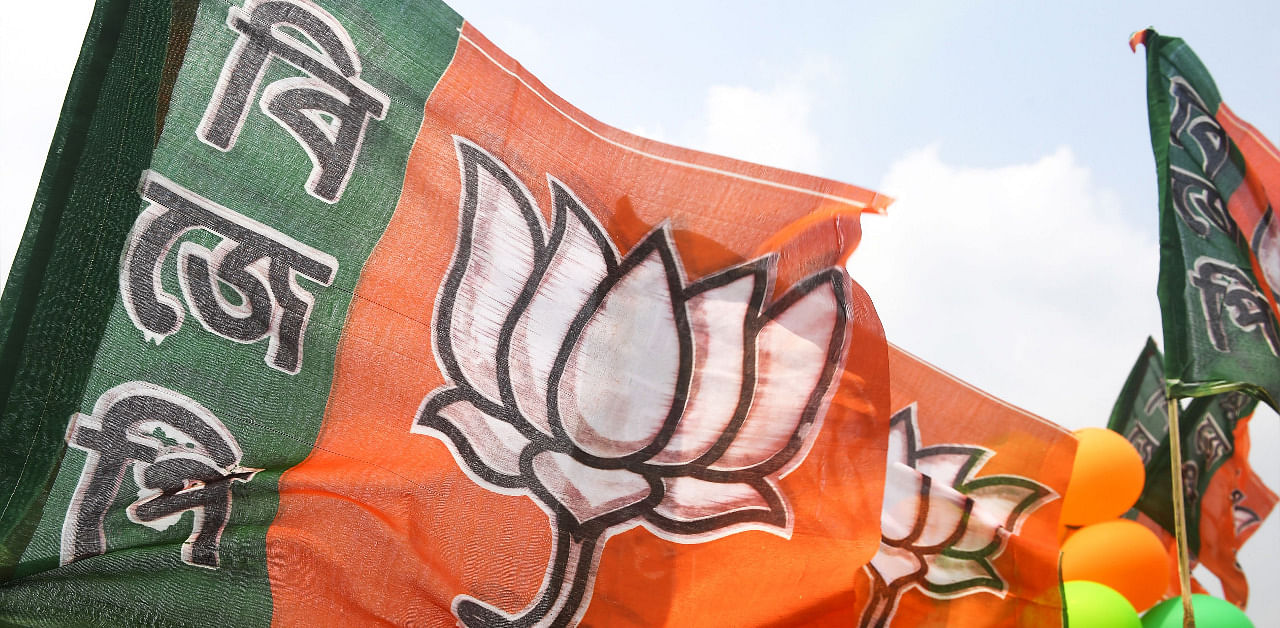
Jitan Ram Manjhi, the ex-CM of Bihar, is arguably not a high profile leader even in his own state. When Nitish Kumar decided to give himself a break from chief ministership in 2014, Manji was his chosen successor. But the Mahadalit (poorest among Dalits) leader was booted out of office in less than a year after a protracted power tussle between him and his mentor. Now, before the Bihar Assembly election, Manjhi’s Hindustani Awam Morcha (Secular) has announced its decision to exit the Grand Alliance, anchored by the Rashtriya Janata Dal (RJD) and Congress, which it had joined before the last Lok Sabha polls. Manjhi’s party is slated to join the Nitish Kumar-Bharatiya Janata Party (BJP) front, the National Democratic Alliance. Although he commands just 1 to 1.5 per cent of the votes, the BJP is more than happy to have him.
This is a recurring theme in how the BJP is plotting its success in state elections. The attempt has been to join several small political streams to the BJP’s political mainstream. In states like Uttar Pradesh and Bihar, the party has attracted small caste groups to its fold by mobilising among the Most Backward Castes (MBCs) and the most disadvantaged among the Dalits. It has challenged the domination of the big caste parties of UP – the Samajwadi Party (SP) and Bahujan Samaj Party (BSP) – who have over the years become representative of Yadav and Jatav interests primarily, although they started out on larger social justice planks.
This could be held as a key reason for the decline of the SP in UP or the RJD in Bihar and the BSP. This has arisen out of their inability to accommodate the growing aspirations of those from less dominant castes with the OBC and Dalit folds. The BJP is using this to opportunity build new vote blocks among them that will benefit it. And given the recent noises it has been making in states such as UP, it appears that this strategy is as crucial for the party as its core Hindutva plank.
The Bengal experiment
Interestingly, the BJP is playing the same caste game in West Bengal, a state that has prided itself for long years on being free from caste politics. Its grand success in the last Lok Sabha election came largely thanks to this effort and it is on track to replicate it in the 2021 Assembly polls.
In Bengal, the forward castes – Brahmin, Vaidya and Kyastha – who dominate the big cities comprise only about 15 to 18 per cent of the Hindu population and about 12 to 13 per cent of the total voters.
However, the irony is that Bengal is completely dominated politically, socially and culturally by the upper castes. All chief ministers of Bengal have emerged only from this group. In every ministry so far, prime posts have largely been enjoyed by the upper castes. Therefore, it would be right to say that all non-BJP parties of the state have an equal share of responsibility in favouring the continuation of this silent upper caste domination.
For the last few years, the Rashtriya Swayamsevak Sangh (RSS)-BJP combine has continuously campaigned among the non-forward castes to make them aware of this deprivation in the political sphere. BJP is thus trying to engineer the right caste combination that will enable it to challenge all other parties.
Bengal’s caste matrix
It is now widely believed that the OBC community forms the majority among the Hindus in Bengal. There are no official figures, however, as no caste survey has ever been done in the state. Reservations for OBCs stands at 17 per cent, and the list includes some Muslim communities too. BJP’s state president Dilip Ghosh is from the OBC group, and in rural Bengal he has been projected as the face of the party who will demolish upper caste domination.
The Scheduled Caste population in Bengal also is comparatively large. Twenty three per cent of the population (about 30 per cent of Hindus) are SCs, while 5.5 per cent are Scheduled Tribes (STs). Among the SCs, a large, influential group are the Matuas. It was Mamata Benrjee who first played the Matua card successfully in the 2011 state election when she defeated the Left Front hands down. Over the years, the BJP has won the hearts of a major section of this community, mainly by making sure that those who have not received Indian citizenship yet will do so through the much-debated CAA (Citizenship Amendment Act).
This said, in the urban belt of South Bengal, comprising 70-75 Assembly constituencies out of a total of 294 seats, the BJP cannot launch its anti-upper caste campaign. In these areas, as mentioned, the upper castes are a sizable group. In fact, the party may not be able to announce its chief ministerial candidate due to this handicap.
The BJP is also trying to win over 'backward Muslims', as they attempted in UP in the past. Whether it would yield results is not known. Apart from this, the RSS-BJP combination thinks it will be helped by the division in Muslim votes between the Trinamool Congress, the Left, Congress and the All India Majils-e-Muslimeen of Assaduddin Owaisi.
We will know whether such caste calculations will bring the Saffron party to power in Bengal only in May 2021.
(Diptendra Raychaudhuri is a Kolkata-based journalist and author of books including, A Naxal Story. He is a deputy editor at the Bengali daily, Aajkal)
Disclaimer: The views expressed above are the author’s own. They do not necessarily reflect the views of DH.